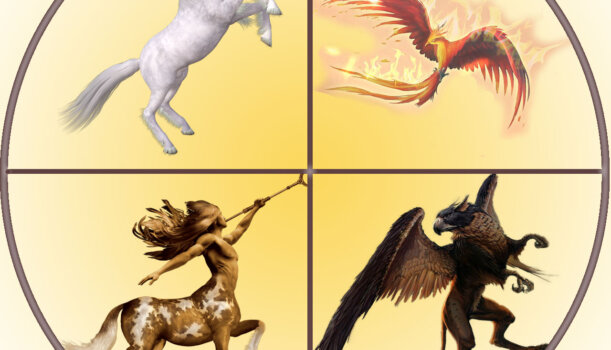
What do the unicorn, griffin, phoenix, and centaur all have in common?
They are all fantastical creatures that can be symbols for Christ!
In this series, we’ve delved into the origin and history of the unicorn and how it uniquely represents Christ’s incarnation and crucifixion. While the unicorn was the focus of the interview with our literary expert, Dr. Jane Beal, she also revealed that other mythological creatures have Christian symbolism.
These symbols were recorded in a book called The Bestiary of Christ by Louis Charbonneau-Lassay. Here’s what Dr. Beal and the Bestiary have to say about these creatures.
The Griffin symbolizes Christ’s nature
I’d like to hear more about what you discovered in these allegories and these mythological creatures, as we would think of them…how they ended up symbolizing Christ and what they taught about Him.
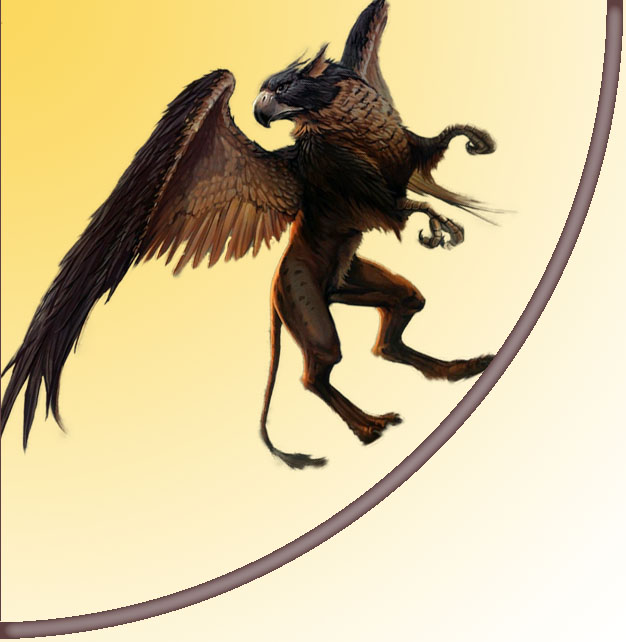
The griffin is another interesting animal that was interpreted as representing Christ because the griffin is part lion and part eagle. Dante in the Purgatorio, towards the end, interprets the griffin as representing Christ’s two natures: His Human nature and His divine nature, and the lion represents His Human nature and the eagle represents His divine nature.
*~*~*~*~*~*
The Bestiary expands on the griffin symbolism by pointing out that both the eagle and the lion are kings of their realms (heaven and earth, respectively), which mirror Christ’s kingship. They also represent Jesus’ power, since the lion and eagle are unstoppable.
In another variant, the griffin can also represent the saints, Christ’s followers who are made in His image, who have a dual nature involving holy thoughts and warring against evil.
*~*~*~*~*~*
The Phoenix symbolizes Christ’s resurrection
Were there other mythological creatures as well, or are the unicorn and the griffin the main ones?
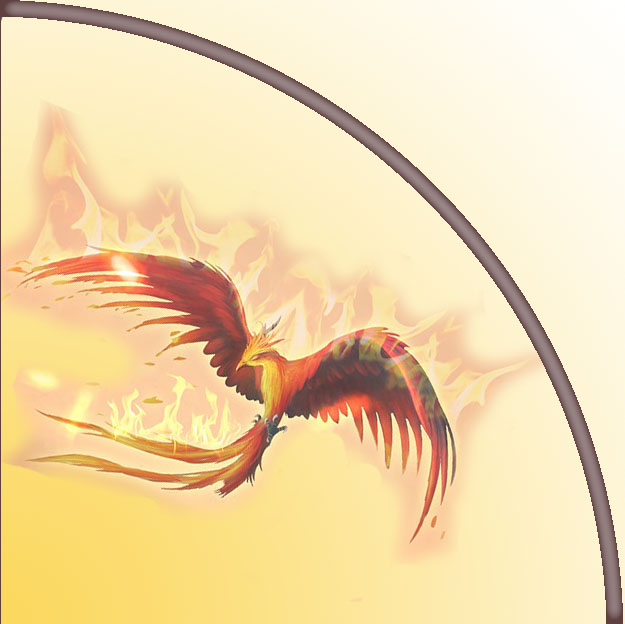
Oh yes, the phoenix also. The phoenix, as we know, is a legend that comes out of Arabia that enters into the Western tradition through Roman, Latin writings from Rome, including famously Ovid’s Metamorphoses. And the phoenix, of course, immolates itself in a fire in a perfumed nest, and then it rises from its own ashes. So the phoenix was taken to be a symbol of Christ’s resurrection, and you can see this as early as the Old English poem “The Phoenix,” which has an allegorical reading of the phoenix as Christ. But you also find that recurring in the bestiaries. So whenever you encounter a phoenix in the bestiaries, it is always going to be glossed as a figure of Christ’s resurrection.
*~*~*~*~*~*
The Bestiary also adds that since only one phoenix is said to exist on the earth at one time and defies the rules of normal reproduction, it represents Christ well, who is the only one of his kind and has no terrestrial father.
Although we did not have time in the interview to delve into all the symbols, here’s one more from the Bestiary.
The Centaur symbolizes Christ as healer, teacher, and redeemer
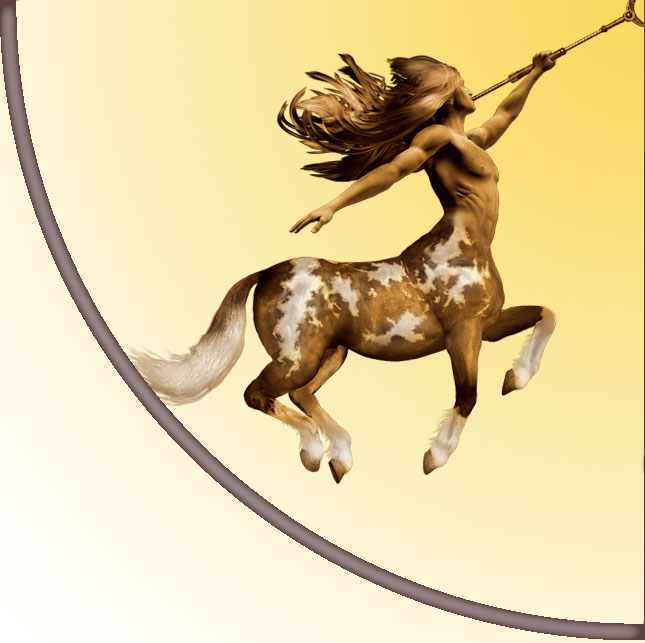
Like most of the dual-aspect creatures, the centaur can represent Christ’s dual nature as human and divine. However, many of the centaur myths paint the creatures as barbaric with the exception of their king, Cheiron, who was considered a wise teacher and healer, even healing the blind. In the Biblical prophecy, the Messiah would heal the blind—a miracle never done before—so at times, the centaur can represent Jesus. Jesus is a great healer, teacher, and redeemer of man.
Centaurs are often portrayed as archers, since arrows and horses are both symbols for speed. The Greek words for “bow” and “life” were associated, and so the archer-centaurs can represent catching souls for Christ to bring them to true life.
Mythological creatures have multiple interpretations
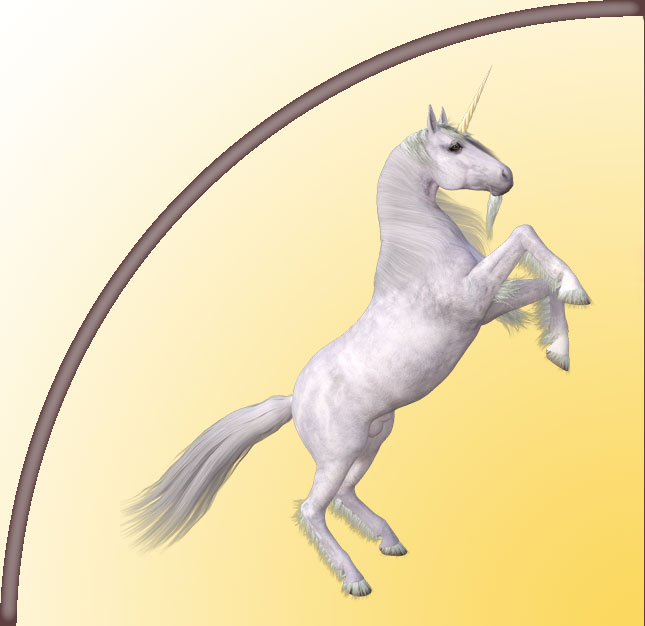
In all these symbols, we see an original story reinterpreted with new meaning. If that sounds strange, keep in mind that this is still common practice today. Each generation has its new take on the classic stories that reflects current values. We see this particularly with fairytale retellings, where the original stories are recast with new meanings to represent current ideas about society, ethics, and gender roles.
In this series, we’ve seen how the old legends of the unicorn, griffin, phoenix, and centaur were all re-envisioned as symbols of Christ in the medieval times. While much of this symbolism has now been lost, these creatures still captivate the imagination and carry hints of their noble history throughout the generations.
As a Christian fantasy writer who has always loved unicorns, I found Dr. Beal’s knowledge very encouraging because it demonstrates how our stories can be “symbols” that convey truth to the world, much like how the Medieval artists used the symbol of the unicorn to evoke Christ’s incredible love to rescue His people.
Thanks again to Dr. Beal for sharing her knowledge about these fascinating symbols!
References
Charbonneau-Lassay, Louis. The Bestiary of Christ. Trans. D.M. Dooling. New York: Arkana, 1991.
Which of these mythological creatures is your favorite? Which symbolism surprised you the most?
The True Meaning of the Unicorn Series
1. Introduction: About Dr. Jane Beal
2. What does the Unicorn Mean?
3. How did the Unicorn Change Over Time?
4. What do Other Mythological Creatures Mean?
Please review the Posting Policy before commenting.


